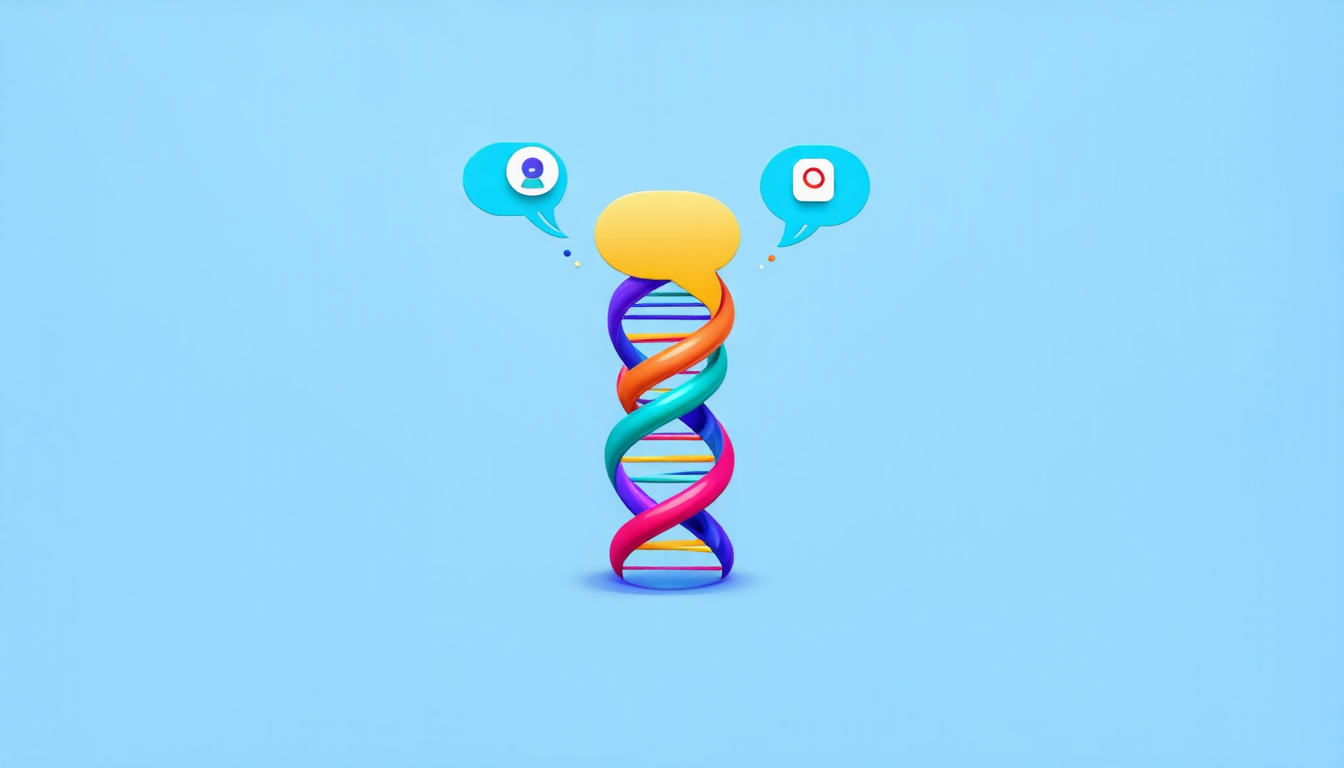Wednesday 10 September 2025
Researchers have made a breakthrough in understanding how humans communicate by creating a visual language that reveals the hidden patterns of conversation. This innovative approach, called Conversational DNA, uses biological metaphors to represent dialogue in a way that is both intuitive and powerful.
The team behind this project used a combination of data visualization techniques and modern machine learning algorithms to create a system that can analyze conversations in real-time. By encoding different aspects of communication into visual elements, such as color, thickness, and shape, the researchers were able to identify patterns and structures that are invisible to traditional analysis methods.
One of the key features of Conversational DNA is its ability to reveal the complex dynamics of human interaction. By representing conversation as a double helix structure, the system can show how different speakers contribute to the dialogue, how emotions ebb and flow, and how topics are explored and developed over time.
The researchers tested their approach on a range of conversations, from therapeutic sessions to interviews with artificial intelligence systems. They found that Conversational DNA was able to uncover insights that would have been difficult or impossible to glean from traditional analysis methods.
In one study, the team used Conversational DNA to analyze conversations between therapists and patients with mental health conditions. They found that the system was able to identify patterns of communication that were associated with successful therapy outcomes. For example, they discovered that conversations that involved more frequent and empathetic responses from the therapist were linked to better patient outcomes.
The researchers also applied their approach to conversations between humans and artificial intelligence systems. They found that Conversational DNA was able to reveal the ways in which AI systems respond differently to different types of human input. For example, they discovered that AI systems tend to respond more positively to questions than statements, and that they are more likely to engage in conversation when given opportunities to do so.
The implications of this research are significant. By providing a new way to understand and analyze conversations, Conversational DNA has the potential to revolutionize fields such as psychology, education, and marketing. It could also be used to improve human-AI interaction, by helping developers create more effective and empathetic AI systems.
Overall, the development of Conversational DNA is an exciting milestone in the field of natural language processing. By providing a new way to understand the complex dynamics of human communication, it has the potential to open up new avenues for research and application in a wide range of fields.
Cite this article: “Deciphering Conversational DNA: A Breakthrough in Understanding Human Communication”, The Science Archive, 2025.
Conversational Dna, Natural Language Processing, Data Visualization, Machine Learning, Communication Patterns, Human Interaction, Emotional Dynamics, Ai Systems, Therapy Outcomes, Dialogue Analysis







